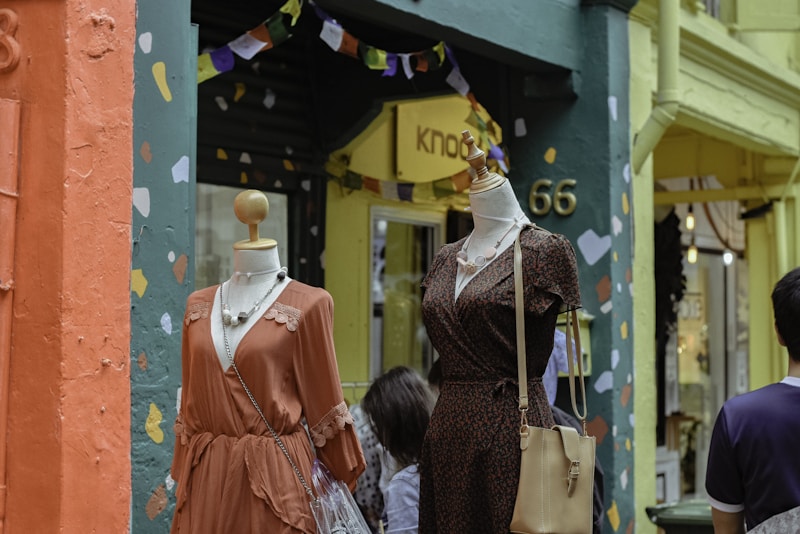Essential Guide to Dress Preservation Techniques for Longevity and Elegance
Understanding Dress Preservation Techniques
When it comes to fashion, particularly within the world of vintage or designer dresses, maintaining their integrity and beauty is crucial. Dress preservation techniques are not only about keeping garments clean but also ensuring their longevity and beauty over time. This article delves into various preservation techniques, best practices, and common questions to help you keep your dresses in pristine condition.
The Importance of Dress Preservation
For many individuals, a dress is more than just an article of clothing; it holds sentimental value or reflects a cherished memory, like weddings, proms, or anniversaries. Thus, understanding proper dress preservation techniques becomes essential. By protecting your investment, you can maintain the aesthetic and value of your dresses for years to come. Here are some benefits of dress preservation:
- Longevity: Properly preserved dresses can last for generations.
- Cost Efficiency: Minimizing wear and damage can save money on repairs.
- Emotional Value: Preserving memories associated with special dresses.
Common Dress Preservation Techniques
Now that we understand the importance of dress preservation, let’s explore some common techniques.
1. Cleaning Techniques
Cleaning is the first step in any preservation process. Different fabrics require specific cleaning methods:
- Dry Cleaning: Most formal dresses, especially those made of silk or delicate fabrics, should be dry cleaned. This method prevents damage by using solvents instead of water.
- Hand Washing: Some dresses can be hand washed using a mild detergent. Always check the care label first.
- Spot Cleaning: For minor stains, a gentle spot cleaning method can be effective. Use a soft cloth and water-soaked sponge with a mild detergent.
2. Proper Storage Solutions
After cleaning, how you store your dress can significantly impact its preservation. Consider these tips:
| Storage Type | Best Practices |
| Garment Bags | Use breathable cotton garment bags instead of plastic. Plastic can trap moisture and lead to mildew. |
| Acid-Free Tissue Paper | Stuff the dress with acid-free tissue paper to help it retain its shape and prevent creasing. |
| Cool, Dry Place | Store dresses in a cool, dry place away from direct sunlight to prevent fading. |
3. Climate Control
Temperature and humidity levels in your storage area can impact dress preservation. Maintain a steady temperature (ideally between 65-70°F) and humidity level (40-50%) to prevent fabric damage.
4. Regular Inspections
Just because your dress is stored doesn’t mean it’s out of danger. Regularly inspect your garments for signs of damage, such as stains or fabric degradation.
Preserving Special Event Dresses
Event dresses, such as Wedding gowns or Bridesmaid dresses, require specific attention during preservation. Here are tailored techniques:
- Immediate Care: After the event, get the dress cleaned as soon as possible to prevent stains from setting in.
- Professional Preservation: Consider hiring a professional service specializing in wedding dress preservation, often involving vacuum packing and custom boxes.
Frequently Asked Questions
Many people have questions about dress preservation. Here are some of the most common:
Q: How often should I clean my dress?
A: It depends on usage. If the dress has been worn frequently, clean it after every wear. For dresses that are rarely worn, consider cleaning them every couple of years.
Q: Can I use mothballs for storage?
A: While mothballs can deter insects, they can also leave a strong odor. Opt for cedar or lavender sachets instead to keep insects away while maintaining a pleasant scent.
Q: What should I do if my dress has yellowed?
A: Yellowing can occur due to improper storage or acidity. Consult a professional cleaner who specializes in vintage fabrics for advice on restoration.
Conclusion and Final Tips
In conclusion, the preservation of dresses is an essential practice for anyone wanting to maintain the beauty or value of their garments. By following the cleaning, storage, climate control, and inspection techniques outlined in this article, you can successfully extend the life of your dresses. Remember to inspect your items regularly and seek professional help when necessary, especially for high-value pieces. Taking these steps will ensure your cherished memories remain as beautiful as the day you first wore them.
